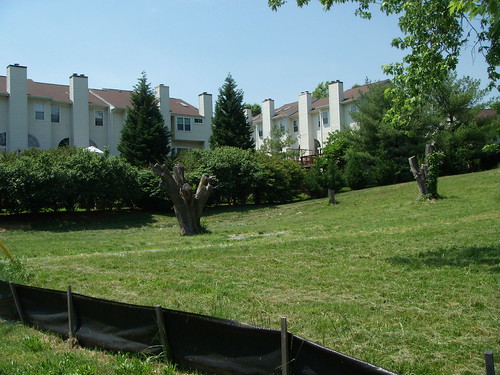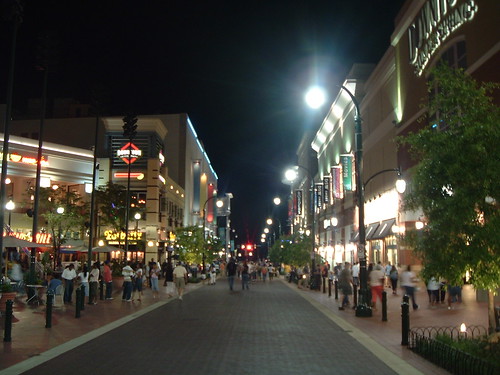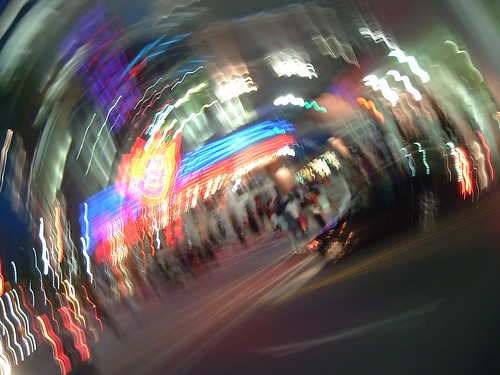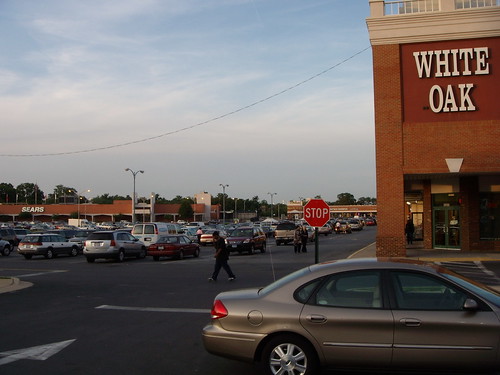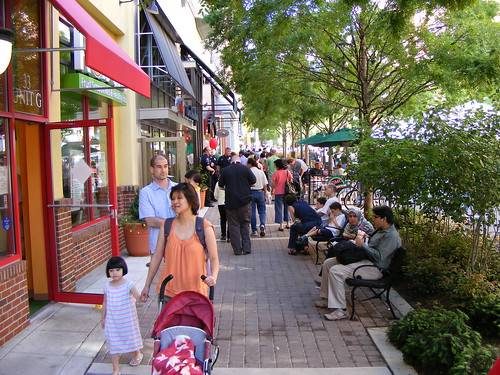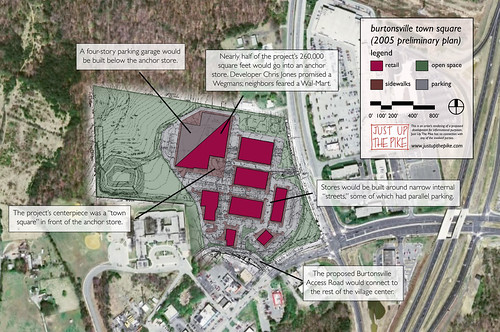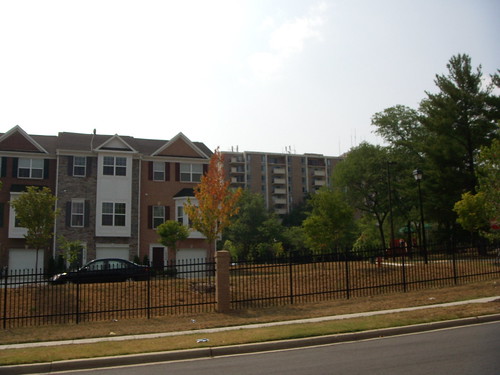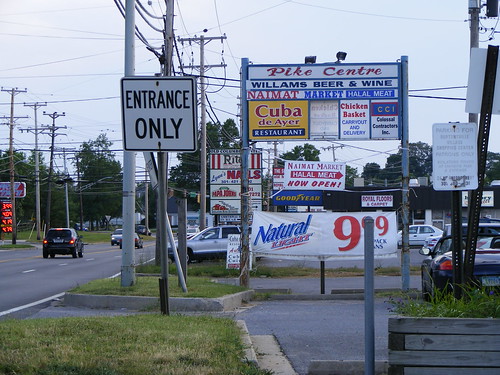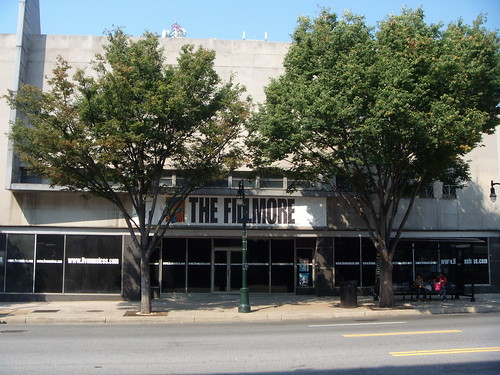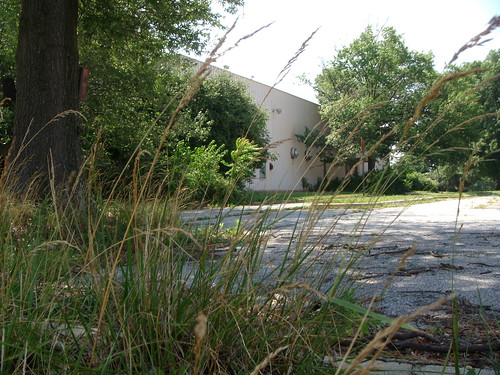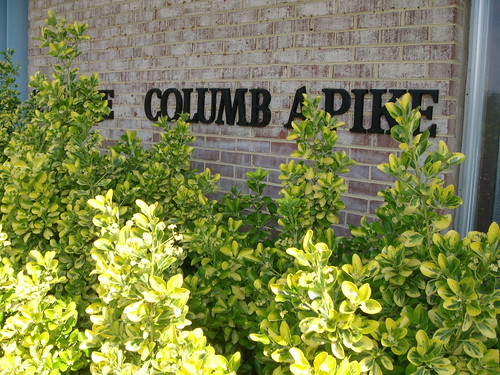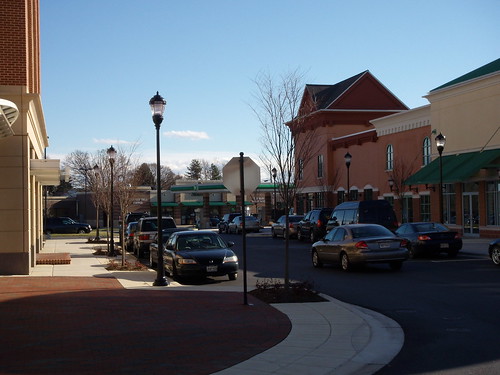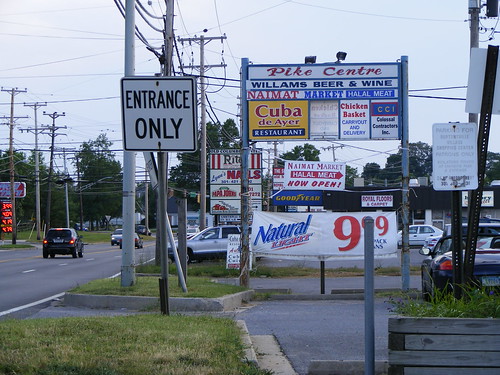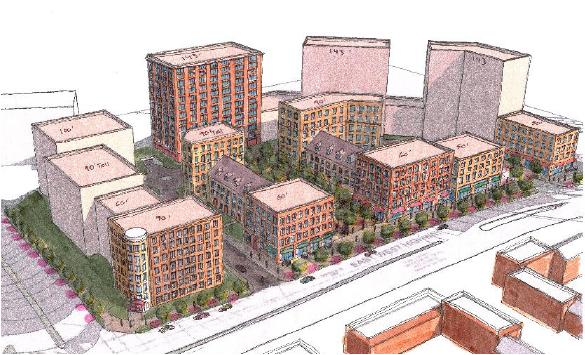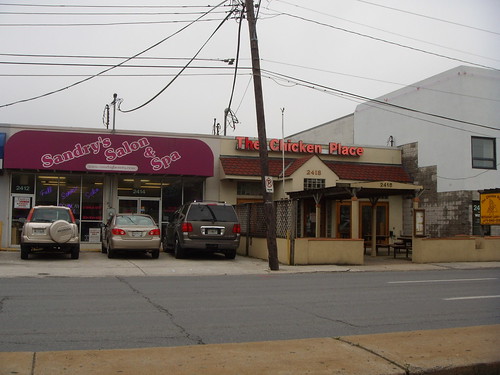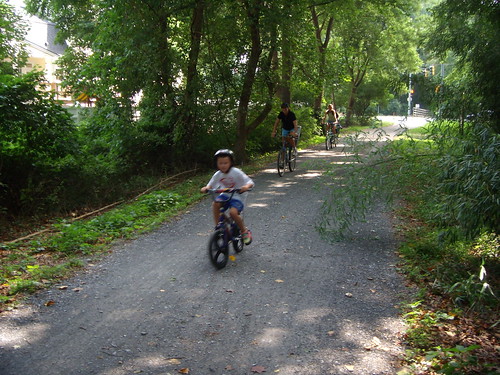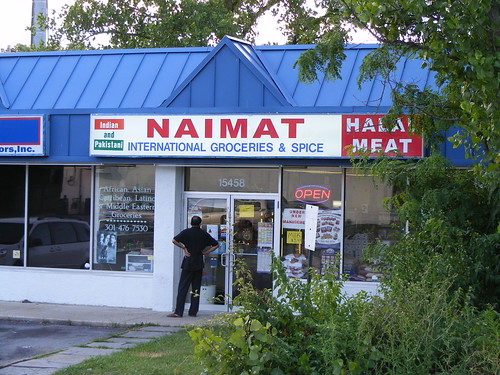 Ryan Homes, whose Whitehall Square development in White Oak is pictured above, will be among those building condominiums on a site at old Route 29 and Dustin Road. Developer Tom Norris presented his proposal for Patuxent Ridge to local residents last night at the Praisner Library, raising concerns about its proximity to the Patuxent Watershed. I wasn't able to make the meeting, but Burtonsville resident and children's songwriter Barry Louis Polisar, who lives near the proposed development, graciously offered to write a guest blog recounting what took place. Click here for Norris's response.
Ryan Homes, whose Whitehall Square development in White Oak is pictured above, will be among those building condominiums on a site at old Route 29 and Dustin Road. Developer Tom Norris presented his proposal for Patuxent Ridge to local residents last night at the Praisner Library, raising concerns about its proximity to the Patuxent Watershed. I wasn't able to make the meeting, but Burtonsville resident and children's songwriter Barry Louis Polisar, who lives near the proposed development, graciously offered to write a guest blog recounting what took place. Click here for Norris's response.The developer for a new housing complex in Burtonsville met with local residents on Wednesday night at the Praisner Library to introduce plans to obtain a "Special Exception" to build five four-story buildings and a community center on 9.5 acres on Old Route 29 between Bell and Dustin Roads. This property is in the rural cluster agricultural area and is currently zoned for one home. It is now occupied by a farm and produce stand. The developers plan to build a High Density Condominium complex that could only be purchased by people who are either disabled or over 62 years of age. They intend to provide 156 paved parking spaces for residents, care-givers, and staff.
Despite little advance publicity about the presentation, the library meeting room was filled with area residents who voiced concerns about the impact this development would have on the nearby Patuxent River Watershed and on the local roads. There are currently about 90 single family homes in the corridor from Rt 198 to the Patuxent River and the developer and Ryland Homes have plans to build 86 mostly two bedroom units, which will effectively double the density overnight.
so much more AFTER THE JUMP . . .
The developer stressed the need for housing for an aging population in Montgomery County and stated that the County's Master Plan encourages this kind of development here, however some local residents at the meeting pointed out that the proposal being planned is effectively a Condominium development with restrictive covenants against anyone under 62 years of age.
The developer's proposal states that their development "will be in harmony with the general character of the neighborhood considering population, density, design, scale and bulk of any proposed new structures, intensity and character of activity, traffic and parking conditions." Many local residents strongly disagreed with this assessment.
Since there is no public bus service from Dustin Road, residents will need to drive their own vehicles to get to local shopping areas. While some senior residents might walk to shopping, many will not and local residents were concerned that not only does this put additional vehicles on Old Columbia Pike which has been designated a local access road, but all vehicles traveling south will have to first go north and maneuver around the recently installed traffic circle. There was additional concern voiced at the meeting that in order to facilitate this new housing complex, sewer and water would have to be brought onto the site along Rt 29--and would have the effect of opening up the entire Old Rt 29 Corridor to development.
None of the local residents attending the meeting voiced approval of these plans and at times the exchange became a little heated. Some residents suggested that concerned citizens write to the planning board to voice their disapproval and make plans to attend the upcoming zoning hearings scheduled for September.
Apart from density issues, the main concern voiced at the meeting is the impact this building will have on the Patuxent Watershed. Once again it seems that an environmentally sensitive area located in the last rural cluster in Eastern Montgomery County is being offered up for development--rather than acreage in an area that is already developed with sewer and water and already has a real public transportation system in place.
If you've got something to say, Just Up The Pike is always looking for guest bloggers. While I don't always agree with the statements made, guest blogs offer an opportunity for all sides to be heard on East County issues. Contact me at danreed at umd dot edu if you're interested in contributing.

